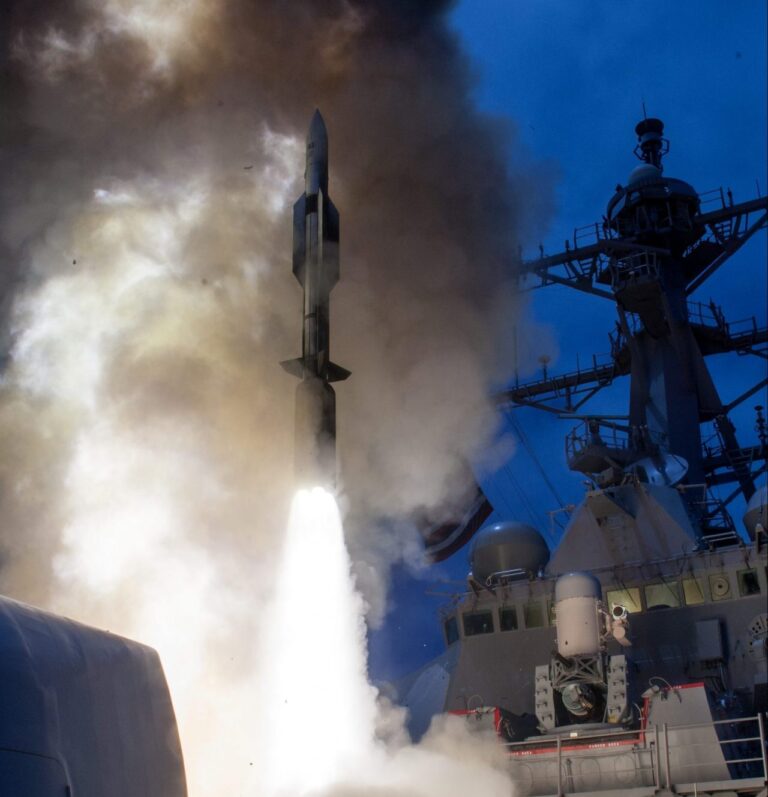The Philippine military has confirmed that the “deadly” Typhon weapon systems deployed by the United States for joint military exercises will soon be withdrawn from the country.
China acquires first SIGINT spy base in North America; Cuba may host PLA radar base, following Russia’s nuclear submarine
The decision comes amid growing Chinese concern and opposition to the presence of US intermediate-range missile systems in the region.
Philippine Army spokesman Colonel Louis Demaara announced on July 4 that a U.S. intermediate-range missile system deployed in the northern Philippines earlier this year is expected to be delivered by September, and possibly sooner.
The system, capable of firing Standard Missile-6 (SM-6) and Tomahawk land attack missiles, was used during the annual exercise.

Col. Louis Demaara added that Philippine troops were trained in handling and maintaining the Typhon missile system but it was not used in live-fire training.
“The US military is currently transporting equipment used in Exercises Balikatan and Salakniv,” Demaara said, confirming the withdrawal plans.
The deployment of intermediate-range ground-based missile launchers in the Indo-Pacific region marks the first significant military action by the United States in a nearly four-decade hiatus since the signing of the Intermediate-Range Nuclear Forces (INF) Treaty in 1987.
The treaty previously banned the development and possession of ground-launched missiles with ranges between 500 and 5,500 kilometers. But the United States withdrew from the treaty in 2019, accusing Moscow of violating it and in reaction to China’s growing military capabilities, particularly in missile technology.
Washington’s decision to deploy such missile systems is seen as a strategic response to perceived threats, particularly China’s growing missile capabilities and expanding military influence in the Indo-Pacific region.
China, meanwhile, has expressed strong opposition to the presence of these missiles in the Philippines, citing concerns over regional stability and security.
Chinese Defense Minister Dong Jun underscored Beijing’s dissatisfaction at a security forum in Singapore last month, warning against the U.S. deploying intermediate-range ballistic missiles in the Asia-Pacific region.
Such actions “have caused serious damage to regional security and stability,” Dong said, echoing sentiments shared by the Chinese leadership on growing military cooperation between the Philippines and the United States.
India’s ‘Iron Dome’ Akash SAM to compete with China’s ‘Sky Dragon’ in Brazilian missile deal
Typhon Weapon System in the Indo-Pacific
The Typhon system represents a major advancement in the U.S. Army’s arsenal and is designed specifically to launch Raytheon’s SM-6 and Tomahawk cruise missiles.

Positioned as a land-based system, the Typhon fills the operational gap between the 500-kilometer-range Precision Strike Missile (PrSM) and future Long-Range Hypersonic Weapons (LRHWs), which are projected to have a maximum range of 2,776 kilometers.
The SM-6 missiles carried by the Typhon primarily function as short-range ballistic missiles capable of targeting both land and sea-based assets. They are designated as strategic weapons for targeting high-value targets such as command centers and air defense facilities.
Meanwhile, the subsonic Tomahawk cruise missile can strike targets up to 2,500 kilometers away when launched from warships or submarines during land-attack operations.
The complete Medium Range Capability (MRC) system consists of a battery operations centre, four launchers, a tow vehicle and a specially modified trailer, providing increased mobility and operational flexibility.

Lockheed Martin delivered one of the first four prototype Typhon MRC weapon systems to the U.S. Army in December 2022. Subsequent testing in July 2023 used four trailer-based launchers and associated equipment to demonstrate system readiness and capabilities.
The U.S. military has not officially announced where it would deploy the missiles, but Japan and U.S. territories in the region are among the possible locations. Deploying the missiles in Japan comes with challenges, including gaining public support and concerns about the possibility of an attack by China.
Alternatives like Guam and rotational deployments near U.S. Asian allies could bolster deterrence against Chinese military activity, especially near Taiwan and the disputed South China Sea.
Russian Su-57s to return to Indian Air Force service; PM Modi and President Putin likely to discuss stealth fighter jets for Indian Air Force
According to the Pentagon’s assessment of the Chinese military, Beijing has approximately 1,500 missiles with ranges between 1,000 and 5,500 kilometers, giving the PLA significant anti-access and air denial capabilities throughout strategic regions.
Experts say amid China’s naval superiority, the U.S.’ adoption of an anti-access/area denial strategy featuring land-based cruise missiles and anti-ship missiles will be key to effectively conducting multi-domain operations.
Essentially, the Typhon system represents a key element of the U.S. Army’s strategy to strengthen precision strike capabilities in the Indo-Pacific region to counter the Chinese threat and strengthen regional deterrence against China’s growing military influence.

